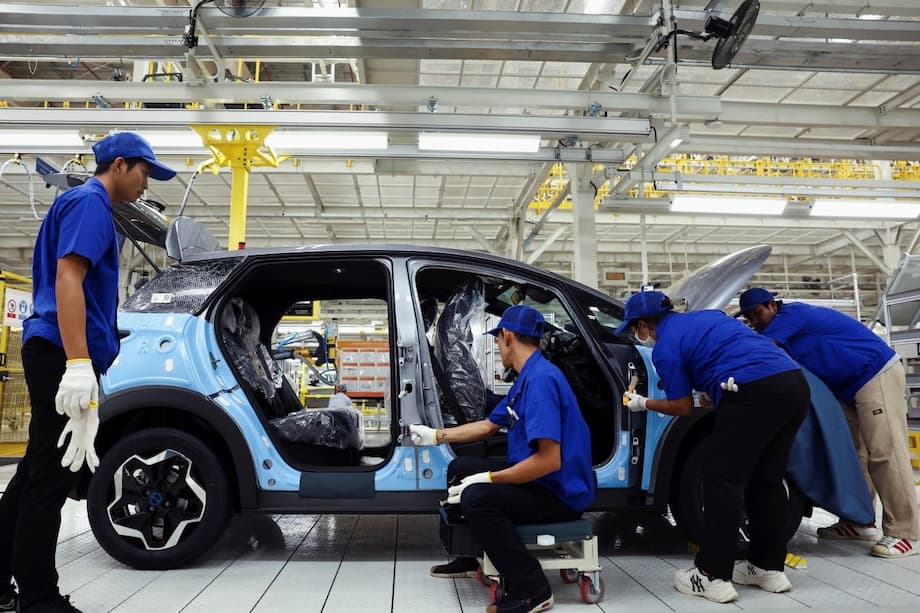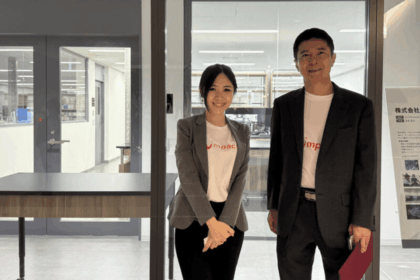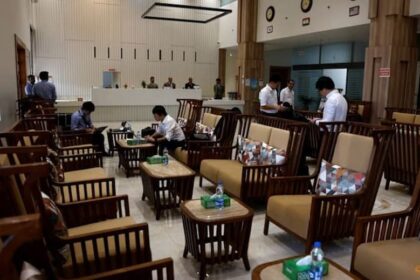China’s Crackdown on Herd Behaviour: A Turning Point for Tech Investment
On August 1, 2025, China’s state planner made a pivotal announcement: a crackdown on “herd behaviour” in emerging industries, especially sectors like electric vehicles (EVs), batteries, and solar power. The move targets the surge of capital into these hot sectors, where firms—large and small—have been piling in, sparking price wars, overcapacity, and collapsing margins. This frenzied competition, known in China as neijuan (involution), has become a major liability for both companies and the broader economy.
- China’s Crackdown on Herd Behaviour: A Turning Point for Tech Investment
- Why Is China Shifting from Speed to Quality?
- How Is Southeast Asia Being Redrawn by China’s New Approach?
- From Chaotic Growth to Sustainable Innovation
- The Digital Silk Road and the Belt and Road Initiative: New Pillars of Engagement
- Geopolitical Tensions: The US-China Tech War and Its Impact
- What Does the Future Hold for Southeast Asia’s Tech Ecosystem?
- In Summary
Officials warned against blind imitation and self-destructive price slashing, emphasizing that competition must have limits and innovation should be orderly. President Xi Jinping himself has called for breaking the cycle of involution and elevating standards. The new rules aim to prevent chaotic boom-bust cycles and enforce investment discipline, even as innovation is still encouraged. This is not a retreat inward, but a strategic reset—one that is already reshaping how Chinese capital moves globally, with Southeast Asia standing at the forefront of this transformation.
Why Is China Shifting from Speed to Quality?
For years, China’s growth model in technology and manufacturing was defined by rapid expansion, aggressive price competition, and a relentless drive for market share. This approach, while successful in building scale, led to excess capacity, razor-thin margins, and a race to the bottom in quality. The government’s new stance signals a shift toward high-quality development, where standards, sustainability, and long-term viability matter more than sheer speed.
Beijing’s crackdown is designed to curb speculative excess at home, preparing Chinese firms to expand abroad more selectively and sustainably. By cooling the “hot money” flows that previously fueled erratic investment surges, China is encouraging its companies to pursue longer-term industrial partnerships, particularly in Southeast Asia. The message is clear: the era of brute-force growth is over; the future belongs to those who can deliver durable, innovative, and responsible solutions.
How Is Southeast Asia Being Redrawn by China’s New Approach?
Southeast Asia has become a magnet for Chinese tech investment in recent years. The region’s young, mobile-first consumers, rapid urbanization, and supportive national policies have created fertile ground for digital transformation. Chinese money has surged into the region, with tech giants like Alibaba, Tencent, ByteDance, and SenseTime pouring billions into cloud computing, AI, e-commerce, and digital infrastructure.
But the nature of this investment is changing. Instead of erratic, speculative capital chasing the latest fads, Chinese firms are now making more deliberate moves—building manufacturing bases, forming joint ventures, and integrating supply chains. This shift is particularly evident in sectors like EVs, green technology, and digital finance, where Chinese companies are not just exporting products but entire industrial ecosystems.
For example, Changan Automobile recently launched its first overseas NEV (new energy vehicle) plant in Rayong, Thailand, investing nearly USD 900 million to establish manufacturing, R&D, and local services. This marks a move from simple exports to exporting complete ecosystems, capital, and technology. Similar trends are unfolding in electronics, lithium batteries, and advanced materials, with Chinese firms relocating assembly, components, and services to Southeast Asia.
Singapore, Indonesia, Vietnam, and Thailand: The New Hubs
Singapore has emerged as the primary destination for Chinese tech investment, attracting over USD 13 billion in 2023—a 57.9% increase year-on-year. The city-state’s strengths in finance, high-end services, and digital infrastructure make it a natural hub for regional operations. Indonesia and Vietnam are also key players, with Indonesia leveraging its vast nickel reserves for EV batteries and Vietnam becoming a powerhouse in electronics manufacturing.
Thailand, meanwhile, is positioning itself as Southeast Asia’s EV production hub. More than USD 3 billion has flowed into Thai EV factories in recent years, with Chinese brands capturing over 70% of the local EV market. This wave of investment is helping to build integrated supply chains and foster technology transfer, supporting the region’s industrial ambitions.
From Chaotic Growth to Sustainable Innovation
The crackdown on herd behaviour marks a fundamental shift from chaotic, short-term growth to sustainable innovation. In the past, Chinese firms often slashed prices to win market share, sacrificing quality and profits. Officials now warn that such extreme competition is self-destructive and unsustainable. The new policy favours stronger players with long-term strategies, encouraging them to align with local development plans and form deeper partnerships.
This approach is already producing results. In Indonesia, Chinese firms now control about 75% of nickel refining capacity—a process vital for EV batteries. But it’s not just about resource extraction; it involves building smelters, transferring technology, and establishing long-term partnerships that support local industrialization. In Vietnam, export-oriented investments have boosted the electronics sector and increased global market share, while in Malaysia and Thailand, FDI is driving growth in automotive and electronics industries.
Challenges and Opportunities for Southeast Asia
While Chinese investment is helping to industrialize Southeast Asia, the benefits vary by country and sector. Capital-intensive, resource-oriented investments often supply China’s own needs, while export-oriented projects can help local industries climb the value chain. However, innovation remains a challenge. Most R&D is concentrated in Singapore, and while patent applications are rising, Southeast Asia is still primarily a manufacturing base rather than an innovation hub.
To fully capitalize on foreign investment, Southeast Asian countries must address structural issues, strengthen institutions, foster local supply chains, and promote skills and technology transfer. Only then can the region move beyond assembly and become a true center of innovation.
The Digital Silk Road and the Belt and Road Initiative: New Pillars of Engagement
China’s Digital Silk Road (DSR) and the evolving Belt and Road Initiative (BRI) are central to its strategy in Southeast Asia. The DSR, a key pillar of the BRI, focuses on expanding digital infrastructure and technology cooperation. Unlike the traditional BRI, which is led by state-owned enterprises, the DSR is primarily driven by private tech giants like Huawei, Tencent, Alibaba, and ZTE, often with policy support from Beijing.
Between 2017 and 2020, Indonesia, Singapore, and Malaysia were the top recipients of DSR projects, mainly in telecom, 5G, data centers, fintech, and e-commerce. Chinese companies have launched smart hospitals, built data centers, and signed multiple agreements with local partners. E-commerce giants like Alibaba and TikTok have increased their investments, though they face regulatory challenges, such as Indonesia’s restrictions on social media sales.
The DSR is not just about business; it’s also about setting standards and shaping the global digital order. China uses the DSR to promote its models for data privacy and security, and to encourage the adoption of Chinese technology standards. However, local resistance and competition from Japan, the United States, and other actors have limited China’s ability to fully impose its norms in the region.
Green Technology and Sustainable Finance
The BRI in Southeast Asia is also evolving, with a growing emphasis on digital connectivity, green development, and sustainable finance. This shift is partly in response to criticism over debt sustainability and environmental concerns. Southeast Asian countries are becoming more selective, seeking projects that align with their own development goals and offer tangible benefits. China is adapting by promoting joint ventures, improving transparency, and engaging with local stakeholders.
Geopolitical Tensions: The US-China Tech War and Its Impact
The transformation of Southeast Asia’s tech landscape is unfolding against the backdrop of intensifying US-China rivalry. The United States is pursuing a strategy of “techno-resource containment,” restricting China’s access to advanced technologies and critical minerals. This approach targets supply chains and productive inputs—such as semiconductors and rare earth elements—rather than relying on military deterrence.
For Southeast Asian countries, this creates both opportunities and risks. Nations like Vietnam, Indonesia, and the Philippines have large reserves of rare earths and strategic manufacturing capabilities, making them attractive partners for both China and the US. However, aligning too closely with one side could jeopardize access to markets and investment from the other. Navigating this landscape requires strategic clarity and diplomatic agility.
Meanwhile, the US-China tech war is driving investment into Southeast Asia, especially in AI and chip manufacturing. Multinationals, governments, and startups are rushing to establish AI hubs and chipmaking facilities in Malaysia and Vietnam, transforming local economies and creating new centers of innovation.
What Does the Future Hold for Southeast Asia’s Tech Ecosystem?
As China pivots toward quality and sustainability, Southeast Asia is poised to benefit from more stable, strategic, and mutually beneficial engagement. The region’s digital economy is booming, with AI expected to contribute USD 120 billion to GDP by 2027 and the cloud computing market projected to exceed USD 512 billion by 2033. Chinese technologies are increasingly embedded in local businesses, from cloud computing and AI-powered verification to digital ID tools and cross-border payments.
However, challenges remain. Chinese firms must navigate established Western tech dominance, regulatory hurdles, and trust issues around data privacy and digital sovereignty. Many governments and enterprises are adopting hybrid strategies, combining Western and Chinese infrastructure. Building trust through partnerships, transparency, and open-source initiatives will be key to long-term success.
For Southeast Asia, the challenge is to move beyond being a manufacturing base and become a true center of innovation. This will require investment in R&D, skills development, and local supply chains, as well as policies that promote productivity, positive spillovers, and technology transfer.
In Summary
- China’s crackdown on herd behaviour marks a shift from chaotic, speculative growth to high-quality, sustainable innovation in tech and manufacturing.
- Southeast Asia is the primary beneficiary of this strategic reset, with Chinese firms investing in EVs, green tech, digital infrastructure, and integrated supply chains.
- Singapore, Indonesia, Vietnam, and Thailand are emerging as key hubs for Chinese investment, each leveraging their unique strengths.
- The Digital Silk Road and Belt and Road Initiative are evolving to focus on digital connectivity, green development, and sustainable finance.
- Geopolitical tensions, especially the US-China tech war, are driving investment into Southeast Asia and creating new opportunities and risks.
- Southeast Asia must address structural challenges and invest in innovation to fully capitalize on foreign investment and become a global tech leader.












